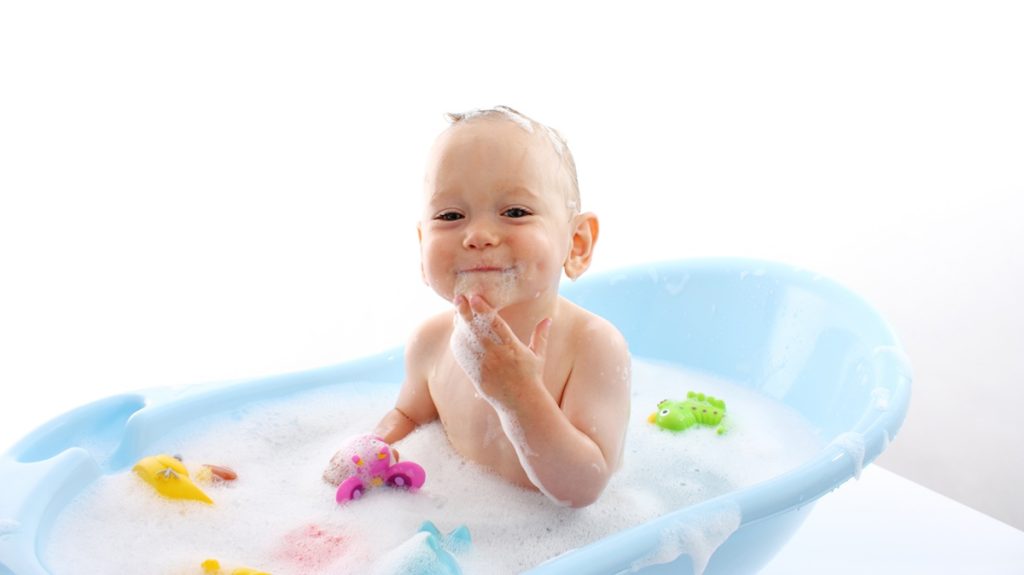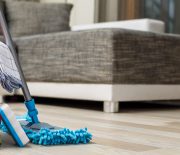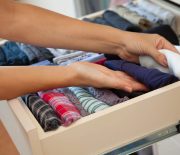Last update: 10 months ago

Bath time: a peaceful, relaxing routine—said no parent ever. One minute, you’re supervising a gentle soak; the next, you’re dodging flying rubber ducks and rescuing a sinking whale. Bath toys turn an ordinary wash into an underwater adventure, but then you see the black specks floating around. Yes, they are none other than mould.
In Australia’s warm, humid climate, where bath toys dry slowly, and moisture lingers, these little playthings easily become breeding grounds for bacteria. Keeping them clean isn’t just about appearances. It’s about protecting your little one’s health. In this guide, we’ll walk you through the best ways to keep bath toys fresh, safe, and ready for another round of watery chaos.
Why cleaning bath toys is important
Ever squeezed a bath toy and watched a suspicious black gunk ooze out? That’s not just yesterday’s bath water. It’s a biofilm, a slimy mix of bacteria and fungi that can cling stubbornly to surfaces. Poor bath toy hygiene can lead to mould in bath toys. A study in 2018 found that 80% of tested bath toys contained at least one harmful microorganism, some of which could cause eye, ear, stomach, or even lung infections. Yikes. Moreover, Listeriosis and Legionnaires’ disease have both been confirmed to result from bacteria and fungi that are formed inside toys and become resistant to cleaning and antibiotics.
When you think about it, it makes sense. bath toys spend their time soaking in warm water, hanging out in a humid bathroom, and sometimes trapping water inside. That’s basically a VIP invitation for germs to settle in and throw a party. While most kids can handle a few unwanted guests, those with allergies, asthma, or weaker immune systems might be more at risk. That’s why regular cleaning is a must!
It’s not just about health. Regular cleaning can also help extend the life of bath toys. Mould and mildew can break down plastic and rubber over time, causing toys to deteriorate faster. With proper care, you can keep your child’s favourite bath toys in play for much longer (and avoid the drama of having to throw away a beloved rubber duck).
Up next, we’ll show you the best ways to do just that.
How often should you clean bath toys
Outside, bath toys might look clean, but on the inside, they’re full of germs. Regular cleaning keeps them safe for playtime.
For general bath toy hygiene, a quick rinse after every bath helps remove soap scum and lingering water. But to prevent mould in bath toys, you’ll need a deeper clean:
- Once a week – Soak bath toys in a mix of warm water and vinegar (or a mild disinfectant) to keep bacteria and mould at bay.
- Every few weeks – Check for any trapped water inside squeeze toys and give them a thorough scrub.
- Monthly – If a toy is looking a little worse for wear, give it a more intensive clean with a diluted bleach solution (if safe for the material).
How to clean bath toys
Bath toys make bath time fun, but they can also trap mould and bacteria. How to clean bath toys with mould inside? You’re not the only one asking! The good news? Keeping bath toys clean is easier than you think!
Clean with soapy water
A simple wash with warm, soapy water is one of the easiest and safest ways to keep bath toys clean. This quick step helps remove dirt, soap scum, and some bacteria. That way, bath time is fresher and safer for your little one.
What to use
For bath toy hygiene, choose safe dish soap or gentle cleaners free from harsh chemicals and fragrances. Look for labels like “hypoallergenic”, “for sensitive skin”, and “fragrance-free”.
Good options include:
- Mild, non-toxic dish soap (labelled as safe dish soap)
- Baby shampoo (a gentle cleaner that’s mild and tear-free)
- Castile soap (natural and fragrance-free)
How to clean bath toys with soapy water
- Rinse with warm, clean water to wash away loose dirt and grime.
- Soak the toys. Fill a basin with warm water and add a few drops of safe dish soap or gentle cleaner. Let the toys sit for 5–10 minutes.
- Scrub thoroughly. You can use a sponge or small brush to clean everything. Look for mould hiding in crevices.
- Clean all soap residue with clean water.
- Shake out excess water and leave the toys in a well-ventilated area to air dry.
For tougher stains or hidden mould, don’t worry! We’ve got more deep cleaning tips coming up!
Clean with vinegar
All-natural and really effective, vinegar is a favourite among parents. This is one of the best ways to disinfect kid’s bathroom items naturally. It prevents “unwanted additives” and other dirt or bacteria on your child’s toys. This is a great eco-friendly alternative for keeping toys fresh. It breaks down soap scum, mildew, and bacteria. Moreover, no safety gear is required.
How to clean bath toys with vinegar
- Mix a solution from equal parts white vinegar and water in a bowl or bucket. White alcoholic vinegar works best because it’s colourless and doesn’t leave any residue.
- Put toys in the solution for 30 minutes to loosen grime and kill bacteria. Make sure you get the solution inside the toy, where dirt can accumulate.
- If needed, scrub stubborn spots with a brush. Do it all over the toy with a small brush.
- Rinse thoroughly with clean water to remove any vinegar residue.
- Let toys air dry in a well-ventilated area to prevent moisture buildup.
Clean with bleach solution
Bleach is like a heavy-duty stain remover for bath toys. Sometimes, regular cleaning just isn’t enough. If you’re wondering how to clean mouldy bath toys, a diluted bleach solution can help. It’s strong enough to kill bacteria and mould but, when used correctly, won’t leave harmful residue behind. Just like you wouldn’t wash your clothes without detergent, sometimes bath toys need a little extra power to stay clean.
Since it’s a strong chemical, bleach should be used sparingly and only when necessary. It’s best for stubborn mould that won’t come off with a gentler cleaning method.
How to safely use bleach for bath toy cleaning
- Mix ¼ cups of bleach with 4 litres (1 gallon) of water in a well-ventilated area. (Bleach is less harmful diluted.)
- Soak the toys for 5 minutes to disinfect thoroughly. While the toys are soaking, press them so the solution gets inside.
- Rinse thoroughly multiple times with clean water to remove all bleach residue. Make sure you rinse the inside of the toys, too. Pour clean water into the holes and squeeze them.
- Let the toys air dry in a well-ventilated spot, or speed things up with a towel or some sunshine. Just make sure they’re completely dry before your child gets their hands on them again!
⚠️ Wear gloves to protect your skin.
⚠️ Work in a ventilated area to avoid inhaling fumes.
⚠️ Keep bleach away from children and pets.
⚠️ Never mix bleach with other cleaners—it can create toxic fumes.
⚠️ Test on a small area first to ensure it won’t damage the toy.
Clean with heat
Heat is a natural and chemical-free way to kill germs, making it a great option for keeping bath toys clean. According to the CDC, boiling is a safe and effective way to sanitise both toys and infant feeding items.
Actually, methods like boiling and steaming have been used for centuries to disinfect without the need for harsh cleaners.
Boiling method
- Bring a pot of water to a rolling boil.
- Put heat-safe toys (like solid rubber or silicone toys) in the water for 5 minutes.
- Use tongs to retrieve the toys and let them air dry completely.
This method can also be a great way to clean the inside of bath toys. It effectively kills bacteria, mould, and mildew effectively. Both hard and soft plastic toys can be boiled. It’s an easy way to keep bath time germ-free. But supervise at all times to prevent spills or burns.
Steaming method
- Use a garment steamer or steam cleaner.
- Hold the steam nozzle close to the toy, covering all surfaces.
- Allow the toy to cool before handling.
This method kills is great for disinfecting without soaking. Ideal for toys that can’t handle submersion. You can use this method on all kinds of bath toys, from hard plastic to squishy foam. Be cautious of hot steam—use protective gloves if needed.
Clean with sterilisation fluid
Sterilisation fluid, like the kind used for baby bottles and dummies, is a gentle yet powerful way to disinfect bath toys. It’s designed to kill a wide range of bacteria and viruses, making it a great option for deep cleaning.
How to use clean bath toys with sterilisation fluid
- Check the label for dilution instructions—most solutions require mixing with water (e.g., 1 capful per litre).
- Soak toys for 15–30 minutes (as directed).
- Rinse well with fresh water to remove any residue.
- Allow toys to fully air dry before returning them to the bath.
This method is effective against bacteria, viruses, and mould. It is safe for most bath toys when used as directed.
Clean with dishwasher
If you’re short on time (or just too tired to scrub bath toys after a long day—no judgment!), the dishwasher is a quick and easy solution. It cleans multiple bath toys at once with minimal effort.
Not all toys can handle the heat!
Suitable Toys
- Hard plastic toys without holes
- BPA-free and dishwasher-safe labelled toys
- Simple, solid toys with no small parts
Avoid
- Soft plastic or rubber toys (may warp or degrade)
- Toys with holes (water can get trapped inside)
- Electronic or battery-powered toys
How to wash bath toys in the dishwasher
- Check if the toys can be used in a dishwasher. Dishwashers run at high temperatures to destroy bacteria, so make sure the toys are dishwasher-safe before you do this.
- Squeeze out the water of bath toys before putting them in the dishwasher.
- Put them in a lingerie bag or a plastic basket if they’re smaller, then place them in the top rack to protect them from high heat.
- Add your preferred dishwasher detergent or cleaning solution. You can use regular dishwashing detergent, a natural option, or dishwasher capsules. For a chemical-free alternative, mix one part white vinegar with three parts warm water.
- Use a gentle cycle. Use a warming cycle to dry toys, but avoid high heat to prevent damage.
- Skip the high-heat drying to prevent melting or warping.
- Let toys air dry completely before returning them to the bath.
Dishwasher cleaning is a quick and easy way to clean multiple toys at once. The combination of hot water and detergent helps break down grime. The high temperature effectively kills bacteria and mould—all without the need for scrubbing.
If you use bleach to clean your baby’s bath toys, running them through the dishwasher can help rinse away any leftover residue. This extra step ensures their safety.
Clean with disinfectant wipes
Some bath toys are easier to clean than others. Toys made from sealed, nonporous materials don’t trap water. A quick wipe with disinfectant wipes can help prevent mould and keep them fresh. But not all wipes are safe for kids’ items. Choose non-toxic, baby-safe wipes without harsh chemicals like bleach or alcohol.
How to clean bath toys with disinfectant wipes
- Wipe down all toy surfaces, paying extra attention to crevices.
- Let the toy air dry for the recommended contact time to ensure proper disinfection.
- Rinse with clean water if required by the product instructions.
This method is convenient for quick cleanups. No soaking or scrubbing required. It is great for non-immersible toys like bath books, stacking cups or letters and numbers. Every now and then, you should still deep clean the toys using one of the other methods above to get rid of any lingering germs.
⚠️ May not eliminate all germs, especially mould in bath toys
⚠️ Not ideal for heavily soiled toys
⚠️ Disposable wipes contribute to waste—consider biodegradable options.
Tips to prevent mould in bath toys
Bath toys and mould go hand in hand—unless you stay one step ahead! When water gets trapped inside toys, and they’re left in humid spaces, mould can quickly take hold. Prevention is key! Here are a few tips to keep mould-free bath toys in your home:
- Rinse and drain after every bath – Rinse bath toys under clean water after each use. Squeeze out any water to stop soap and bacteria from building up.
- Let toys dry properly – Moisture is mould’s best friend. Place toys in direct sunlight or a dry towel to fully dry before storing. If possible, use an exhaust fan or keep the bathroom well-ventilated to speed up drying.
- Store in a well-ventilated container – Skip the airtight bins. Bath toys need airflow! Use a mesh bag, a perforated storage box, or even a shower caddy that allows water to drain. For extra protection, consider keeping them outside the humid bathroom when not in use.
- Plug the holes – Those tiny holes in squeeze toys? They’re basically mould incubators. Seal them with a dab of hot glue to keep water out entirely. Just make sure the toy is completely dry before sealing. Check periodically to ensure the glue stays intact.
- Choose easy-to-clean toys – When buying new bath toys, look for ones without holes or ones that unscrew.
Don’t forget non-toy items! Other bath-time essentials, like washcloths and sponges, can also collect germs. Washing kids’ washcloths regularly is just as important as cleaning bath toys. Wash them after each use. Hang them in a well-ventilated area to dry completely.
By following these simple steps, you won’t have to Google how to clean bath toys with mould every few months. A little prevention goes a long way. But if a toy gets too mouldy, don’t hesitate—toss it and get a fresh one!
When to replace baby bath toys
No matter how careful you are, some bath toys will eventually reach the point of no return. Here’s when to replace baby bath toys:
- Persistent mould or mildew – The black spots keep coming back even after you clean and scrub.
- Trapped water that won’t drain – Squeeze toys that won’t dry out could have bacteria growing inside.
- Cracks, peeling, or damage – Broken toys can trap dirt and bacteria that cleaning can’t get rid of.
Bath time is safer and more fun when we replace worn-out bath toys. And don’t worry! There’s no shortage of rubber ducks on the market waiting to take its place.
How to pick easy-to-clean toys for bathtime
The right bath toys can make cleaning easier and help prevent mould growth. Some toys are hard to scrub. Others practically clean themselves with a quick rinse. Here’s what to look for when choosing the best bath toys for your child:
Simple designs
Toys with fewer crevices and seams are much easier to clean. The more tiny spaces they have, the more spots for mould and soap scum to hide. Smooth, solid toys without hidden compartments are the best choice.
Solid, non-porous materials
Some materials are naturally better at resisting mould and bacteria. The best options include:
- Hard plastic – Durable, easy to rinse, and less likely to trap water.
- Silicone – Flexible, non-porous, and often dishwasher-safe.
Important! Avoid toys with fabric parts, porous foam, or small, sealed openings where water can sneak in but never fully dry out.
Dishwasher-safe options
Also, not all plastics are BPA-free. Make sure you check the label before buying. This can save you a lot of scrubbing. Silicone toys are usually safe for dishwashers, while plastic toys need a closer look. Some can warp under high heat.
Easy to take apart (if necessary)
If a toy has multiple pieces, make sure you can take it apart for a thorough clean. Hard-to-disassemble toys with hidden compartments often become breeding grounds for mold.
Consider the age factor
Younger kids need toys that are easy to grip. Older children may enjoy interactive or educational bath toys. Regardless of age, choosing toys that are easy to clean is key.
Think long-term
Investing in high-quality, mould-resistant bath toys can save you time and effort. Reading reviews beforehand can help you avoid hard-to-clean toys. A little research now means fewer mouldy surprises later!
Do you need a helping hand?
Hire a professional cleaning team!
Takeaways
- Bath toys are a breeding ground for mould and bacteria – The combination of warm water, trapped moisture, and humid bathrooms makes bath toys the perfect environment for germs. Regular cleaning is essential to prevent health risks like infections or allergies.
- Multiple cleaning methods work, but prevention is key – You can clean bath toys with soapy water, vinegar, bleach, heat, or even in the dishwasher, depending on how dirty they are. But the best way to keep them safe is to rinse and dry them well after each use and store them somewhere with good airflow.
- Some toys just need to go – Even the best cleaning methods won’t always do the trick. If mould keeps coming back, water is trapped inside, or the toy is cracked or peeling, it’s time to toss it. Keeping bath toys in good shape helps make bath time fun and safe.








